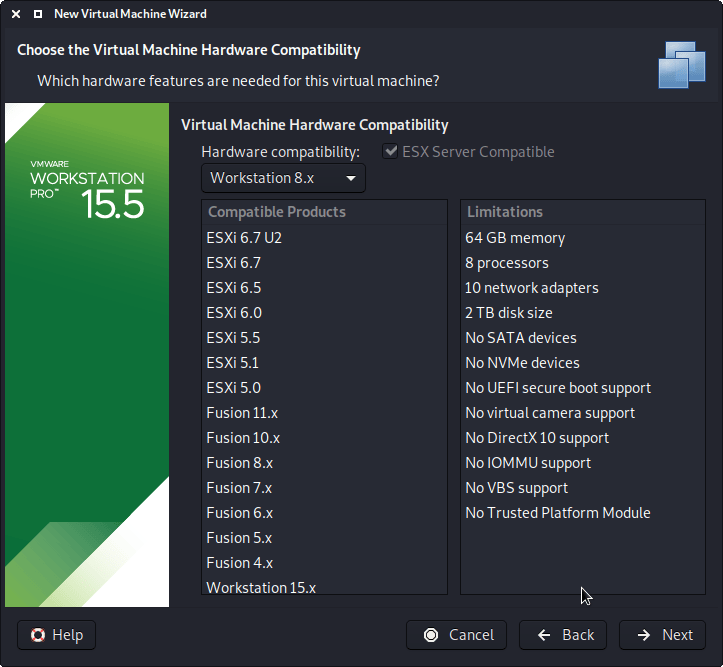
- VMWARE VS VIRTUALBOX FOR LINUX SOFTWARE
- VMWARE VS VIRTUALBOX FOR LINUX CODE
- VMWARE VS VIRTUALBOX FOR LINUX LICENSE
- VMWARE VS VIRTUALBOX FOR LINUX WINDOWS
Red Hat Virtualization is a complete infrastructure solution for virtualized servers and technical workstations. When you choose Red Hat ® Virtualization you are choosing KVM.
VMWARE VS VIRTUALBOX FOR LINUX CODE
VMWARE VS VIRTUALBOX FOR LINUX WINDOWS
VMWARE VS VIRTUALBOX FOR LINUX SOFTWARE
Don’t pay for products you aren’t using or restrict your software choices. Lower total cost of ownership, freeing up operating budget to explore modern, innovative technologies.Choosing a virtualization option based on KVM has many advantages over other solutions, like VMware vSphere. KVM is production-ready for enterprise workloads with the features you need to support your physical and virtual infrastructure, at a lower operating cost. By removing vendor lock-in, you give yourself the freedom, flexibility, and resources to build the foundation for a cloud-native and containerized future. But proprietary virtualization can keep you from having the resources to invest in clouds, containers, and automation. VMware offers a well-established, stable hypervisor with excellent performance and features. With KVM, you will need to rely on support from the open source community and your own IT organization, or a supported vendor like Red Hat. With VMware, you will get enterprise-level support as part of your ELA. KVM is also interoperable with your existing infrastructure and gives you access to the source code, which means it is easy to integrate and scale however you need. With KVM, the most demanding application workloads can be virtualized, and it is the basis for many enterprise virtualization setups, such as data centers and private clouds. vSphere includes several application programming interfaces (APIs) that can be used to make management of your VMs easier.Īs part of the Linux kernel, KVM scales to match the demand load if the number of guest machines and requests increases. vSphere offers a maximum of 12TB of RAM per host with a maximum of 64 hosts per cluster. VMware offers a scalable virtualization platform, however it’s important to consider how adding additional hosts or VMs might impact an ELA. Maturityīoth KVM and ESXi are mature and stable hypervisors that can support enterprise workloads. Overall, KVM has a lower total cost of ownership. Although an ELA may save you budget up front, it can increase your costs over time with incremental gains in capacity and functionality in return.
VMWARE VS VIRTUALBOX FOR LINUX LICENSE
With VMware, you will need to purchase licenses for various products and will be locked into an enterprise license agreement (ELA).

KVM is distributed as part of many open source operating systems, so there isn’t an additional cost. CostĬost is a key differentiator between KVM and the VMware virtualization solutions. You won’t have the same restrictions with KVM because it is open source and can be integrated with your existing infrastructure and with many different Linux and Windows platforms. This can also increase your hardware requirements. ESXi uses VMware’s management platform, which means you will need to use other products in VMware’s control stack.

Hypervisors use different methods to communicate with the physical hardware of the host. In terms of speed, KVM runs applications at near-native speeds, faster than other industry hypervisors, according to the SPECvirt_sc2013 benchmark. ESXi also has slower performance when running servers, although this difference may be insignificant for typical loads. KVM and ESXi are both type 1 hypervisors, which means they should outperform a type 2 hypervisor.ĮSXi generally requires more time to create and start a server than KVM.

One of the most important areas to consider is how the hypervisor’s performance will impact your infrastructure.


 0 kommentar(er)
0 kommentar(er)
